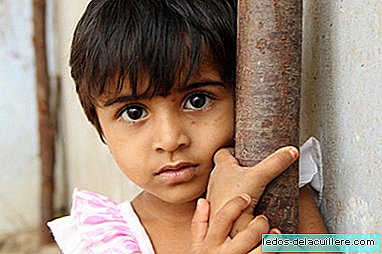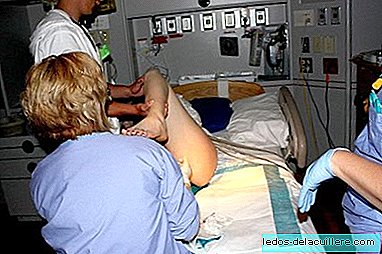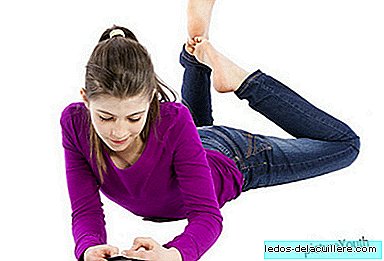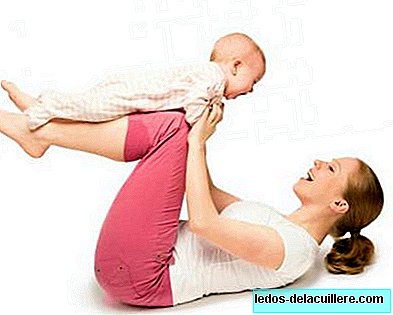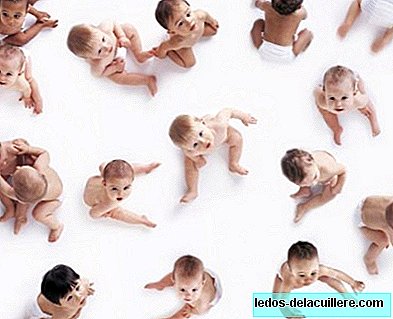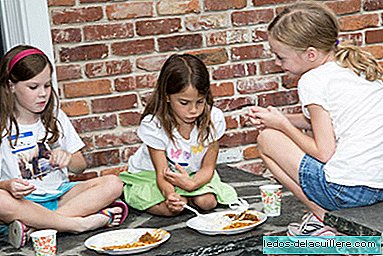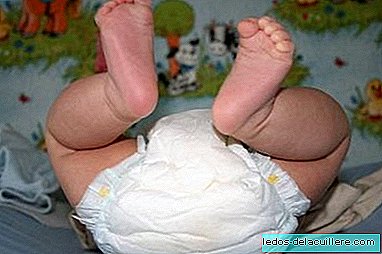
Changing diapers to the newborn baby is one of our first tasks as parents, a task that will last over time for many months. And, although in the end we are experts in this maneuver, by force of changing up to ten diapers a day, some are not bad tips on how to change the diaper to the newborn, especially to remove the remains of the meconium and take care of the umbilical cord.
The first thing we have to keep in mind is that we have to take all the material needed to change the diaper ready and within reach. So we will not leave the baby unattended at any time.
What do we need to change the baby's diaper?
- New diaper
- To clean the diaper area: warm water and cotton (for newborns with sensitive skin) or a clean soft mitten or damp cleaning wipes.
- Protective cream or ointment for baby's skin. There are many brands, softer to prevent and more concentrated to soothe irritations and diaper rash.
- If we are not at home or do not have a specific place to place the baby, we will need a wide cotton fabric or gauze that serve as changer on any surface. In hospitals they usually provide cellulose gauze. There are folding changers that fit perfectly in the baby's bag and that have at least one waterproof part.
How do we clean the meconium?
The meconium, the baby's first feces, is thicker and sticky and stains the skin more intensely than the following feces, so cleaning will have to be more thorough. The cotton works quite well to clean these poops, and once removed for the most part you can moisten the cotton or use a damp cloth to remove the stuck remains that dirty the baby's skin. The rest of the diaper change process is the same as with subsequent feces.
Cleaning of subsequent depositions of the newborn
In the usual poops after the meconium, which arrive around the third or fourth day, we will use a soft mitten, cotton soaked in water or, what I think is more comfortable, baby wipes.
The process to follow It is the same: gently clean the intimate parts of the infant from front to back (never the other way around, especially in girls, to avoid spreading bacteria from the rectum, which can cause infections in the urinary tract).
Obviously, we place the baby on his back, and it is very useful to lift the child's legs to better access his intimate parts (anus and genitals). To do this, we take his feet with one hand and raise it slightly so that we can comfortably take out the diaper. We put it back on the changing table to clean it (the new diaper may have already been placed underneath it, although we run the risk of having your needs done at that precise moment).
We proceed to clean the area. Do not forget to clean the folds that form between the thighs and the buttocks to avoid remaining leftovers. In girls, you have to pay special attention to the remains of poop, which being so liquid can stay between the lips or even inside the vagina, areas that will be cleaned gently.
Without letting the folds get wet (they dry in the air in a moment or we can apply some toilet paper) we can now apply the protective cream to prevent irritation and dermatitis.
Place the new diaper
We raise the baby's legs again to be able to put on the new diaper. Open the clean diaper and slide it gently under the baby's body. Children should place their penis down so that the urine does not leak over the diaper to the navel and waist.
We will soon have learned that the elastics are on the back and fit in front, toward the navel. The elastic straps are very comfortable but they make us run the risk of tightening too much. We will have to leave enough slack so that, if we change the position of the baby, it will continue without pressing.

What precautions should be taken with the umbilical cord?
As a newborn, we will have the umbilical cord with the clamp, and special care must be taken. Above all, we must ensure that the cord does not get dirty with feces or urine to prevent omphalitis or navel infections. After the cord falls, the risk of infection persists until the navel has not healed completely, so you should continue with the same care and vigilance until the navel dries.
Although there are special diapers that ensure protection and support for the cord, there is not much difference with normal diapers. Ideally, the cord should be tightly fastened and firm, it may be below the diaper or above, but rather above (the diaper should be low), not to be just at the base of the diaper because you could push the cord with the risk of releasing it. A tight garment (not tight) on the diaper helps keep the cord and the clamp fixed if they are not under the diaper.
What if you pee during the diaper change?
As we have commented, and parents who have already changed diapers will know from their own experience, it is common for babies to pee while we change their diaper. Exposure to the air of the genitals, or feeling the wipe cleaning them can cause it.
With the girls the changer will be stained, but with the boys this fact is more "dangerous", since they extend their "radius of action". So with them it is a good idea to cover their penis with a clean diaper while changing their diapers. It is always good to have on hand toilet paper or tissues to proceed to "containment and emergency drying" if the baby urinates during the diaper change.
What diaper to wear?
Finally, we will say that although most of us prefer comfortable disposable diapers, some consider washable or reusable diapers As the best option. It is a less comfortable system but surely more environmentally friendly. Today there are many brands of washable diapers that have nothing to do with the old versions. It is best to choose brands that close with velcro, brackets or buttons to avoid having to use safety pins, more dangerous.
Anyway, hopefully all these tips for changing the diaper to the newborn They are useful and you become experts when performing this simple maneuver that scares you so much at the beginning.


